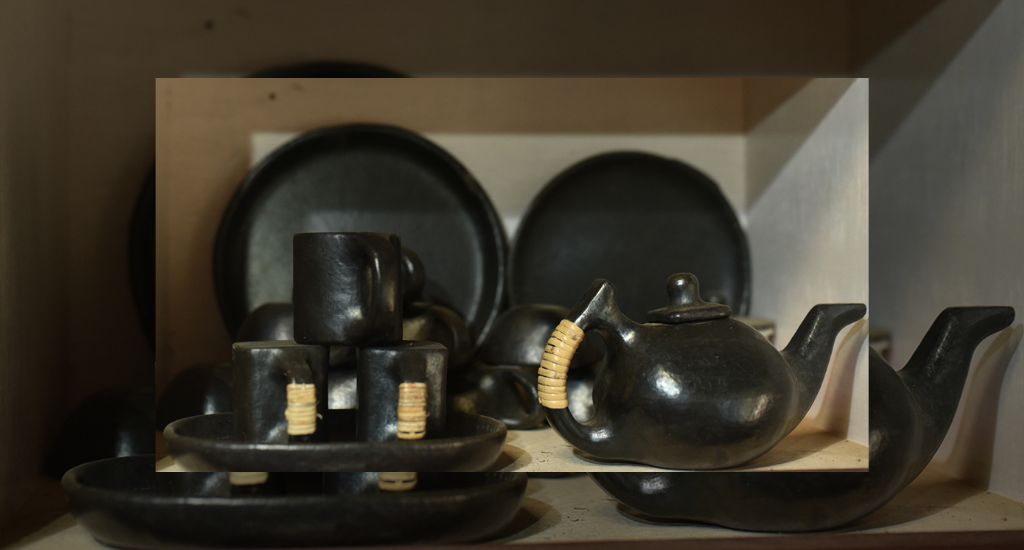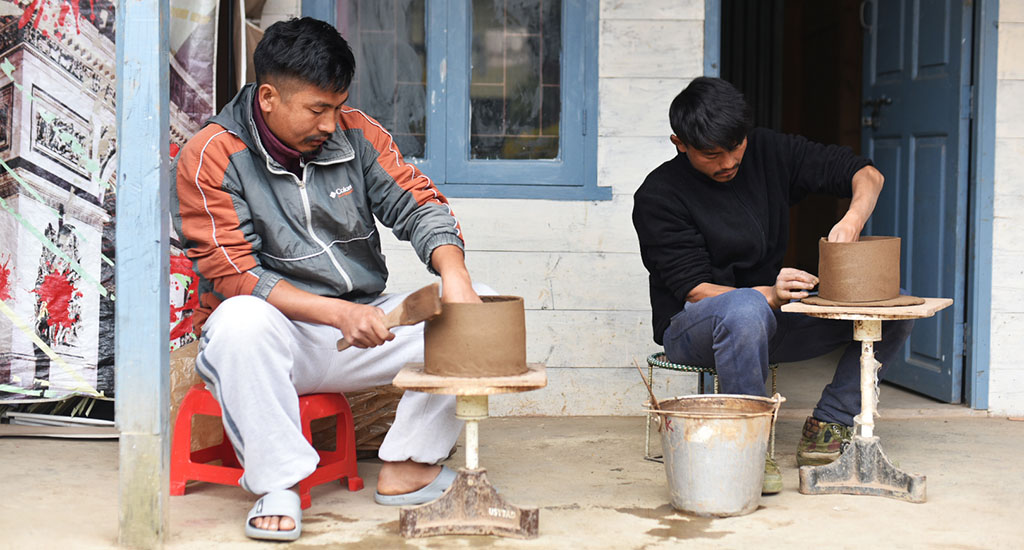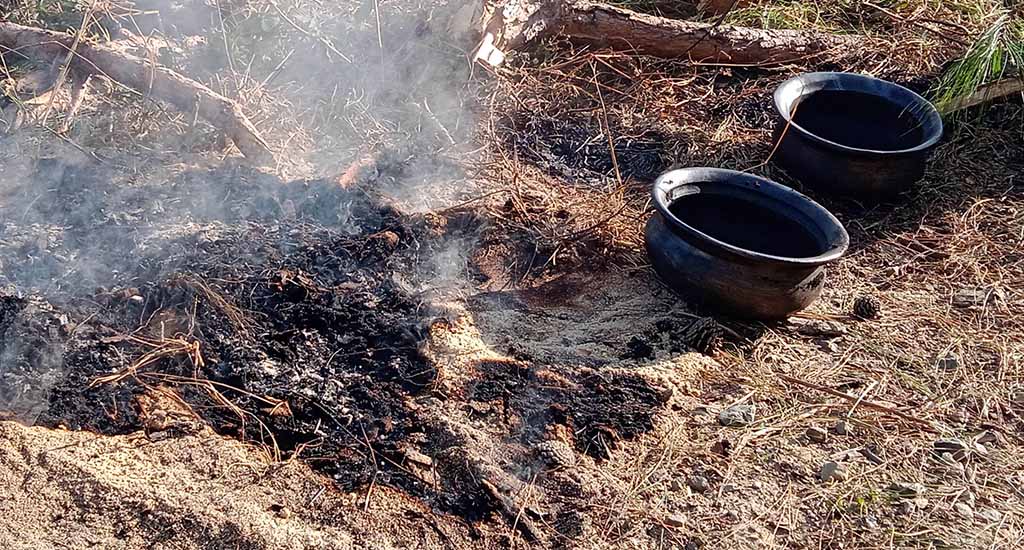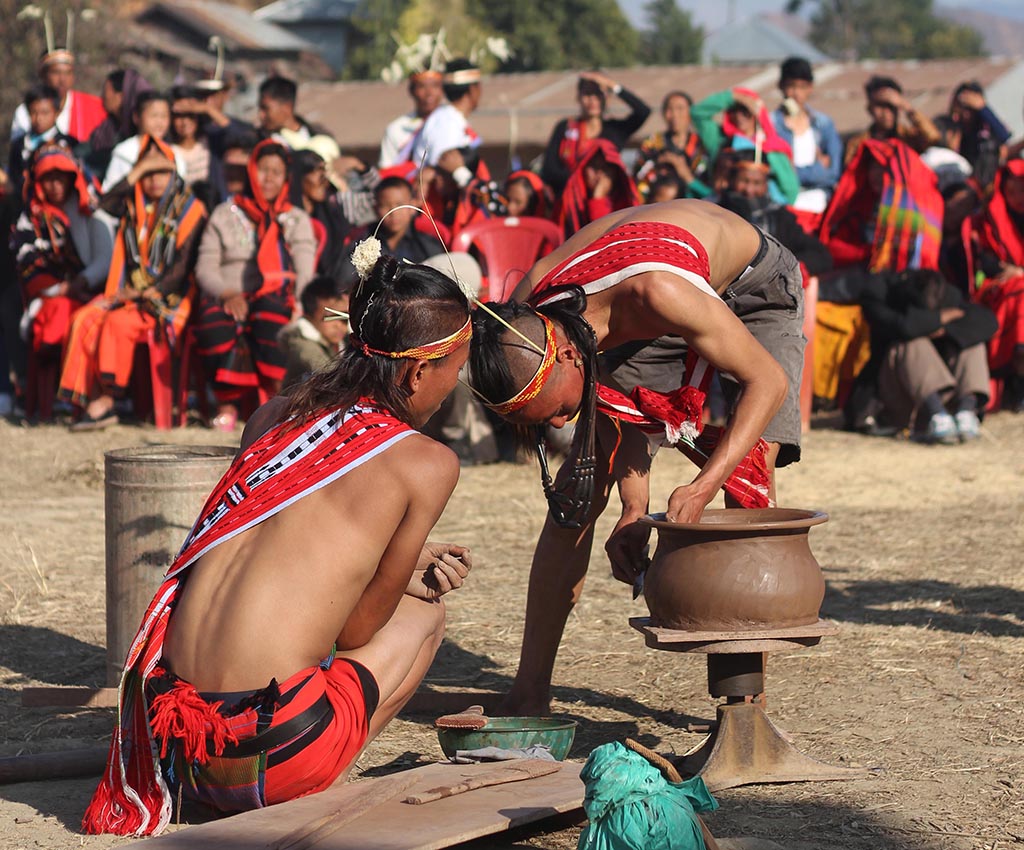
Youth revive traditional black pottery of Manipur
In Nungbi Khullen of Manipur youth spin their wheels to revive the famed black pottery, selling their products across India and improving their village’s economy.

In Nungbi Khullen of Manipur youth spin their wheels to revive the famed black pottery, selling their products across India and improving their village’s economy.
Black Pottery and Nungbi Khullen in Manipur’s Ukhrul district have always been synonymous with each other. Nestled along the national highway (NH 202) that runs between Nagaland and Manipur, the quaint village of about 350 households located 38 kilometres from the Ukhrul district headquarters is the chief producer of black pottery in the state.
The pots, made using a special mixture of clay and powdered serpentinite rock, are coveted possession in many households for their functionality and simple design.
Today, black pottery crafts from the village are available pan India and potters are in a race against time to deliver bulk orders from metropolitan cities.

However, a little over seven years ago, the unique black pottery of Nungbi Khullen village faced a different challenge altogether. The legacy of the unique craft hung in the balance as demands had dwindled and the pottery was on the verge of vanishing.
“Black pottery has always been a part of our lives,” said Worshang Awungshi, a 34-year-old artisan, who is among the young generation of potters from Nungbi Khullen.
In olden times, the unique pots – which were perfect for slow cooking on fires – were bartered with neighbouring villages for essential items such as salt, king chilli, rice, meat and other commodities.
While the arrival of stainless steel and aluminium pots and wares posed a challenge to black pottery, there was still a steady domestic demand for these pots.

However, towards the late 2010s, the demands of the local populace had been met and the older potters were at their wits’ end as to how to market their pots outside the district. By the end of 2014, there were only five potters in the village where artisans once thrived.
Awungshi remembers the sorry state of affairs of the potters and the bleak future of black pottery when he returned home in 2014 after graduating from Shillong.
Having learnt the art of making pots at a young age, he usually spent holidays at home making pots and selling them to earn his ticket fares and pocket money. He had also observed the interest in black pottery at the Ministry of Micro, Small & Medium Enterprises (MSME) Expo at Imphal in 2011. As such, knowing the huge potential black pottery possessed, he was devastated to learn that there were only a few potters left in the village to carry on the craft.

“To my understanding, the younger generation were disinterested because they didn’t want to get their hands dirty for something they didn’t place any value on,” said Awungshi on why the youth from his community were reluctant to pick up the craft.
For Awungshi, it was important to preserve the craft that had always been a part of his community. He also understood just how much respect and appreciation people had for the black pottery artisans and the price their crafts fetched in the markets.
With no time left to lose, he rolled up his sleeves and got his hands dirty, becoming a full-time potter in 2014.
“Two young potters and I wanted to prove to the youth that preserving and promoting black pottery could also be a financially viable profession,” Awungshi recounted emotionally as he shared with Village Square on what inspired him to become a potter.
With access to better transportation and social media at the tip of their fingers, the mini-renaissance that started in 2014 has gathered much pace now.

Today, there are as many as 30 active pottery artisans in the village – mostly young potters aged 18-35 years. Many of them are educated youth who have come back to embrace their community’s unique craft while some of them are daily labourers-turned-potters.
On an average, each artisan earns approximately Rs 30,000 a month with sales surging during festivals and trade fairs. These youth have become the financial head of their respective families alleviating the financial burden faced by their parents and helping boost the village’s economy and welfare.
“We’ve had a steady increase in the number of youth picking up the craft each year which is a huge positive thing for the whole community,” expressed an optimistic Awungshi.
The black pottery of the village is also not restricted to cooking pots alone anymore. The youth make many eco-friendly earthenware such as pressure cookers, bowls, cups, plates and kettles, making the products much more appealing to metropolitan customers.

“Most of the orders come in bulk through middlemen from Imphal. From there, the products are sent to metropolitan cities such as Delhi and Mumbai. All this bodes well for the economy of our village as well as the future of black pottery,” Awungshi added.
The lead image shows a tea set with a kettle made of Manipur black pottery (Photo by Worngachan A Shatsang)
Worngachan A Shatsang is a freelance journalist based in Ukhrul, Manipur. He writes about football, rural life, farming and environmental issues. He is a Rural Media Fellow 2022 at Youth Hub, Village Square.